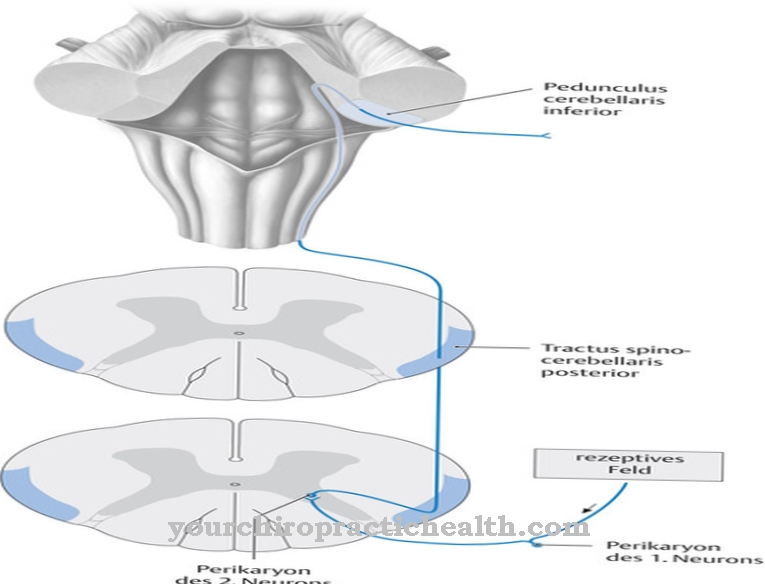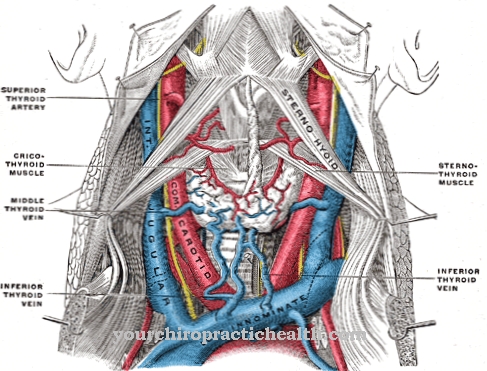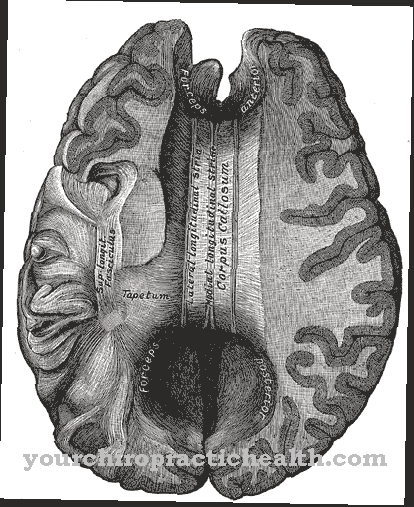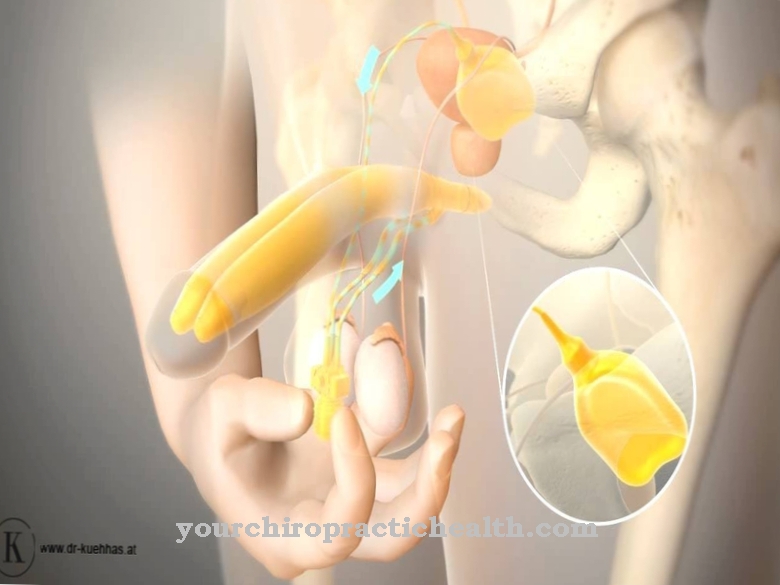Lymphatic vessels form a tubular structure and are used to transport aqueous solutions.In the body they run alongside veins and arteries.
What are lymph vessels?
Lymphatic vessels resemble the shape of blood vessels. However, they are not responsible for transporting blood, but for transporting lymph. Lymph is a light yellow liquid.
It has proteins, fats and water. It also contains important immune cells that are essential for the body's defenses. Lymph is found in all tissue of the body, which is why lymphatic vessels appear in all tissue occurrences.
Exceptions are bones, cartilage and teeth. In connection with the lymph vessels, the lymph nodes also play an important role. The lymph nodes are an important part of the immune system. They act as a filter station and have the task of purifying lymph.
Together with the lymph vessels, the lymph nodes form the lymphatic system of the human body. The vessels begin as a small branch system and join together to form large tracks. They lie parallel to venous vessels and run through the entire body.
Anatomy & structure
In the case of lymphatic vessels, a distinction is made between four vessel types. They are associated with different characteristics and tasks. However, the vessel types also share some similarities. All lymphatic vessels consist of three wall layers. The innermost forms the Intima. This is followed by the Media and the Adventitia on.
- The lymph capillaries are the finest of the four types of vessels. With them, the lymphatic system succeeds in reaching into the deepest tissue layers. In the form of a branch system, lymph capillaries are able to absorb even small amounts of tissue fluid. As the smallest unit of the lymphatic system, the capillaries have a width of 50 µm.
- The precollectors form the next stage. They collect the tissue fluid and pass it on to the third vessel shape, the so-called collectors.
- The collectors contract at regular intervals in order to force the lymph to the next collectors.
- The lymphatic collecting trunks ultimately form the largest vessel shape in the lymphatic system. They collect the lymph from the collectors and flow into the venous blood circulation. In contrast to blood vessels, lymph vessels do not form a closed system.
Function & tasks
First and foremost, the lymph vessels are responsible for transporting the remaining lymph back. This is tissue fluid that has not been completely absorbed by the blood vessel system. There are also protein molecules. They are returned to the venous bloodstream together with the tissue fluid.
Furthermore, the immunobiological effect is one of the most important tasks of the lymph vessels. It protects the body from infections and foreign antigens. In addition, antibodies are produced that support the immune system. Another function of the lymph vessels is to transport fats. As part of fat digestion, these are absorbed with the diet. In the small intestine, they are packed in so-called chylomicrons. They then enter the blood via the lymph vessels.
Furthermore, thanks to the lymph vessels, the body is able to dispose of metabolic products, foreign bodies and pathogens. This also applies to the lymph nodes. They take on a cleaning function and support the immune system in defense. Furthermore, the lymphatic vessels have the task of bringing about a reliable return transport of protein. Specifically, it should be possible to avoid large accumulations of protein molecules in the interstitium.
Interstitium is the term used for intermediate tissue, as it occurs as connective, supporting and muscle tissue. If the pressure were to increase due to an accumulation of protein molecules, disturbances in the blood flow could occur. Finally, lymphatic vessels perform the task of transporting chylomicrons out of the gastrointestinal tract. Chylomicrons are small particles that contain cholesterol.
You can find your medication here
➔ Medicines against swelling of the lymph nodesIllnesses & ailments
Lymphangitis and lymphedema are the most common diseases of the lymphatic vessels. Lymphangitis is also known colloquially as blood poisoning. This is an inflammation of the lymph vessels, predominantly on the skin and in the subcutaneous fatty tissue. Lymphangitis can be traced back to bacterial infestation. The primary triggers are streptococci and staphylococci. In rare cases, lymphangitis is triggered by the consumption of chemotherapy drugs or other cytostatics.
As a symptom, a red spot on the skin above the inflamed lymphatic system is noticeable. In the advanced stage, fever and malaise are the consequences. Lymphangitis can usually be treated well with antibiotics.
In contrast, lymphedema is a palpable accumulation of fluid in the intercellular space. The edema can appear in the extremities, face, and genitals. A disruption of the lymphatic system leads to the tissue water no longer being able to be removed. The accumulation of fluids is associated with an inflammatory clinical picture.
Previous infectious diseases, heart failure, kidney diseases, liver problems and thyroid diseases are possible causes. In the course of the disease, lymphedema can be divided into a primary and secondary variant. Both variants share the common feature that the lymphatic loads are not managed. A distinction is made in the course analysis.
The primary edema occurs in the legs and can be attributed to a hormonal change. In contrast, secondary lymphedema is the result of tissue destruction. The triggers include burns, chemical burns, and skin sagging. With massage techniques and compression bandages it is possible to achieve a reduction.
Exercise therapy can also help. In particularly severe cases, super microsurgery is performed. The goal is to restore the functionality of the affected lymph vessels. With small incisions it is possible to reduce lymphatic water retention in the long term.
























.jpg)



